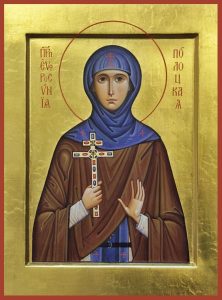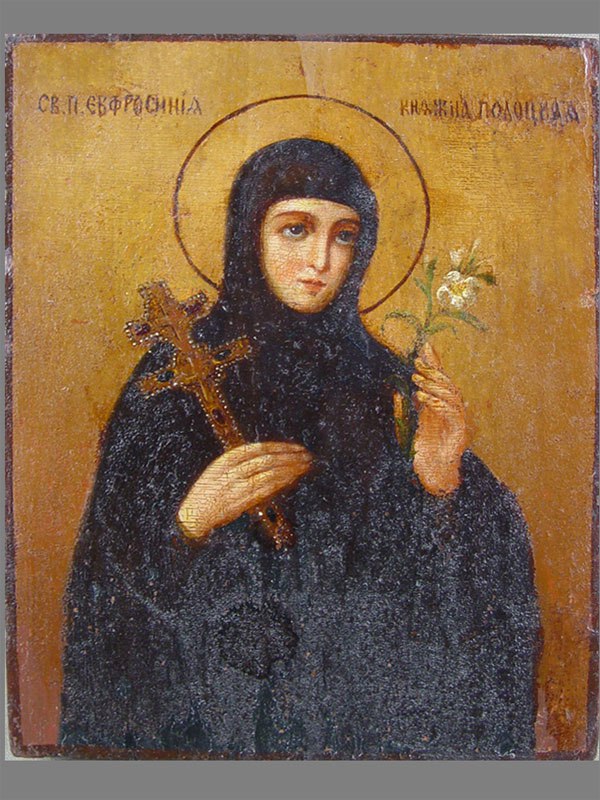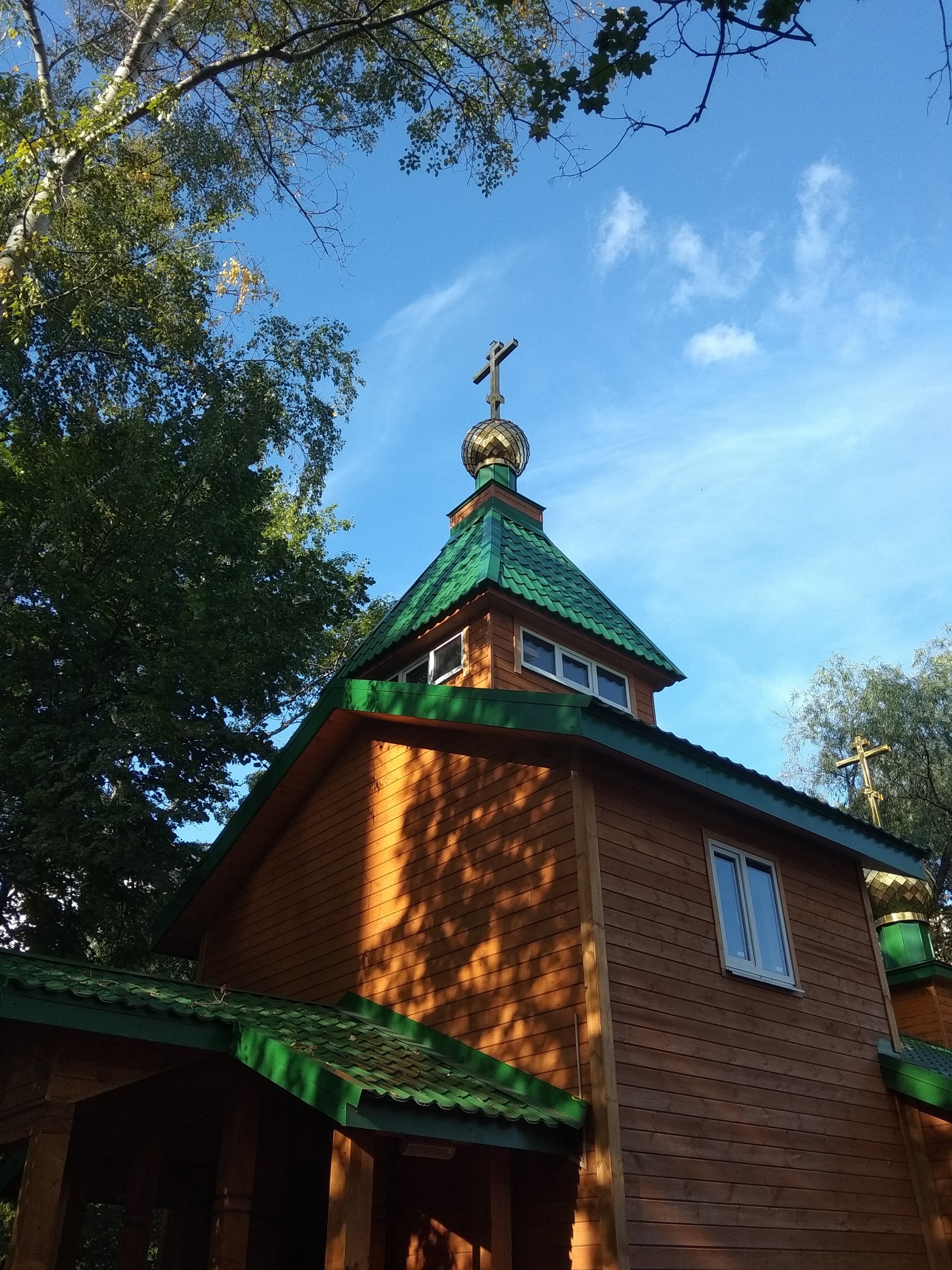Church of St. Euphrosyne of Polotsk in Kuntsevo

Saint Euphrosyne, Abbess of Polotsk, was named Predslava in the world and was the daughter of Prince George Vseslavich. Since early childhood, she was characterized by a thirst for knowledge, a love of prayer, and a desire for spiritual perfection. Rejecting all offers of marriage, she decided to devote herself to the service of God and took monastic vows with the name Euphrosyne. With the blessing of Bishop Ilia of Polotsk, she settled at St. Sophia Cathedral, where she copied books, considering it her main asset and spiritual work. In 1128 the bishop instructed Euphrosyne to found a convent, and she went to the village, the site of the future monastery, taking only sacred books with her. In the newly founded Spaso-Preobrazhensky Monastery, the monk not only organized a strict monastic life, but also taught the girls literacy, book copying, church singing, sewing and various crafts, fostering in them a love of work and faith. Thanks to her efforts, the majestic Transfiguration Cathedral was erected in 1161, which has survived to this day as a unique monument of ancient Russian architecture. In addition to the convent, the monk also founded the Bogoroditsky Monastery, to which, at her request, Patriarch Luke of Constantinople sent a list of the miraculous Ephesian Icon of the Mother of God, which emphasized the importance of her work not only within Polotsk, but also throughout the Christian world. In her declining years, Saint Euphrosyne went on a pilgrimage with her sister Eupraxia and nephew David, wishing to venerate the greatest Christian shrines. They visited Constantinople, and then arrived in Jerusalem, where the Lord vouchsafed her to end her earthly journey peacefully on May 24, 1173, in the Russian monastery of the Most Holy Theotokos. In 1187, her relics were transferred to the Kiev Caves Monastery, and in 1910 they were returned to Polotsk to the monastery she founded. Saint Euphrosyne of Polotsk is revered as the heavenly patroness of female monasticism, a spiritual mentor and educator who left a deep mark on the history of the Russian Church and culture. Her efforts to spread literacy, monastic asceticism, and piety continue to inspire subsequent generations of believers.
Address: Moscow, Molodogvardeyskaya St., 14

